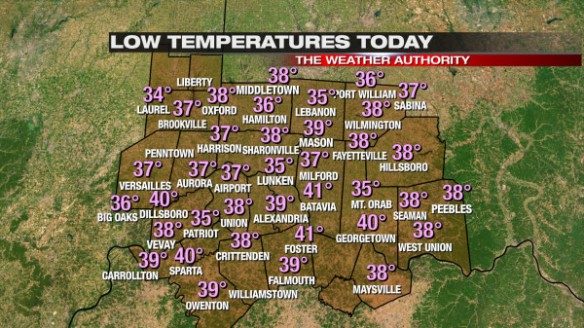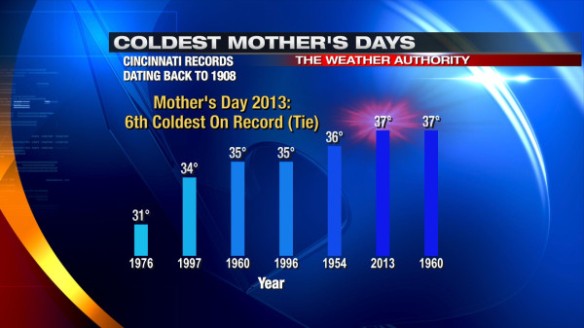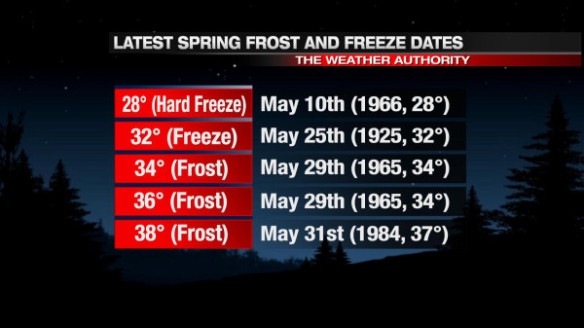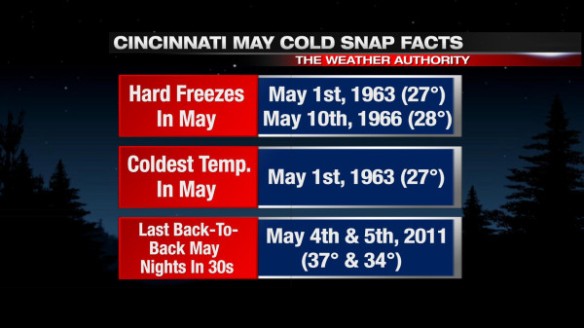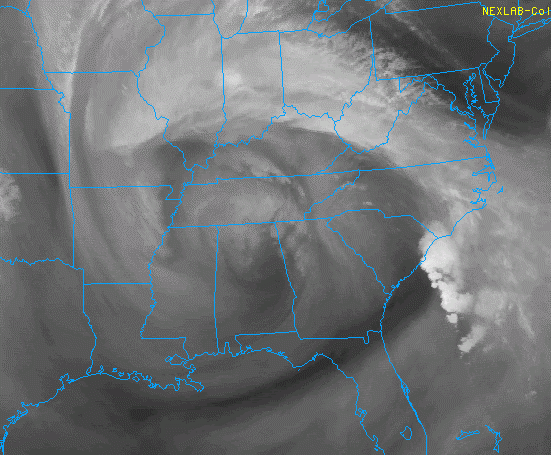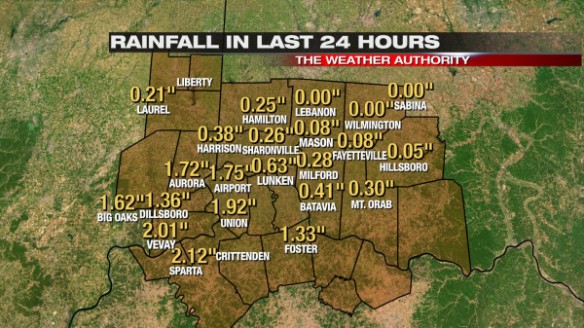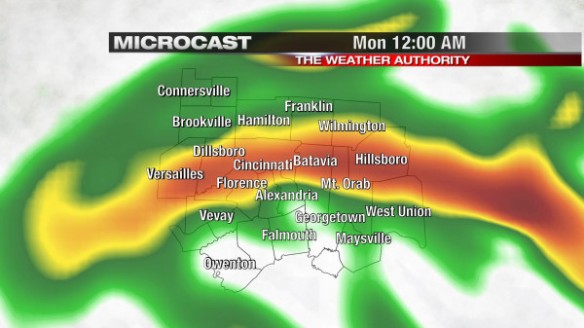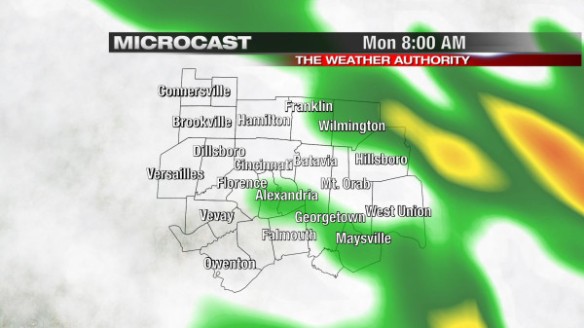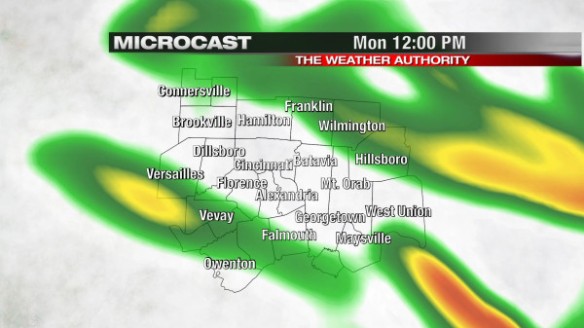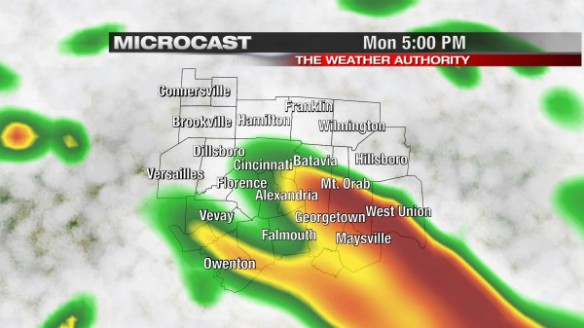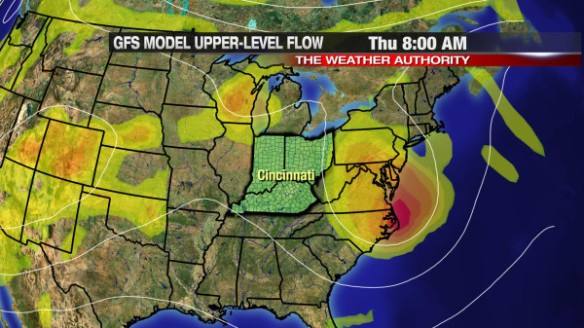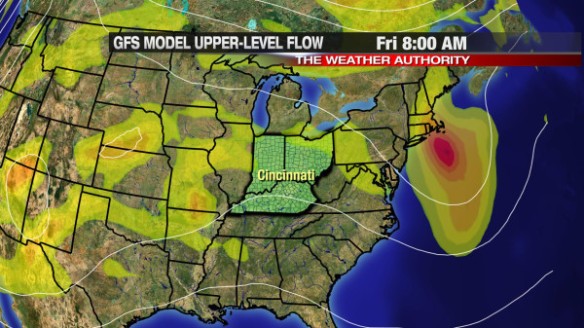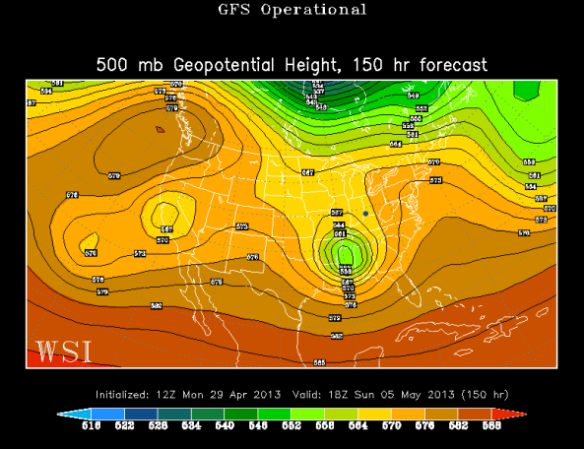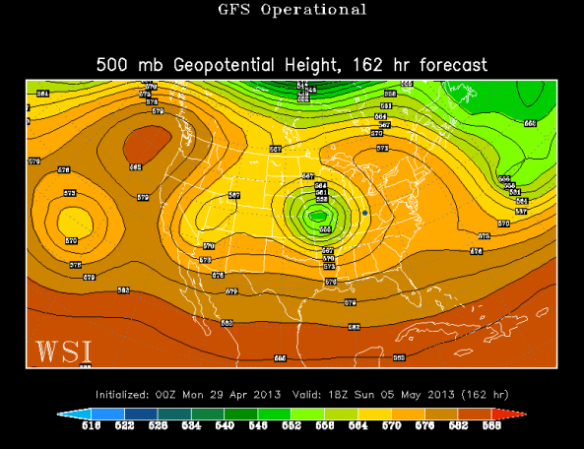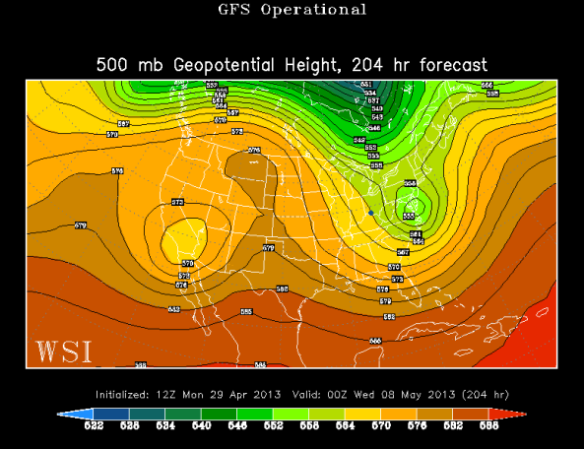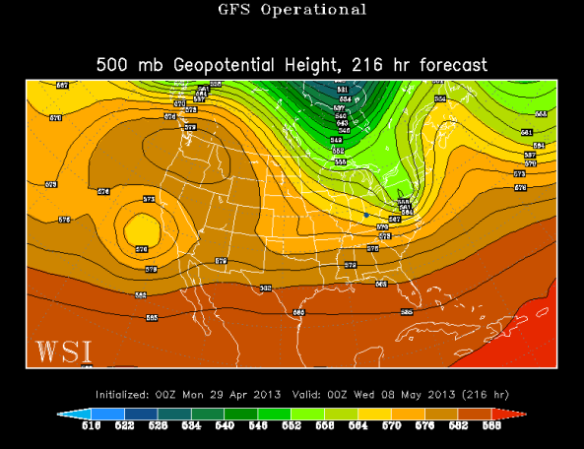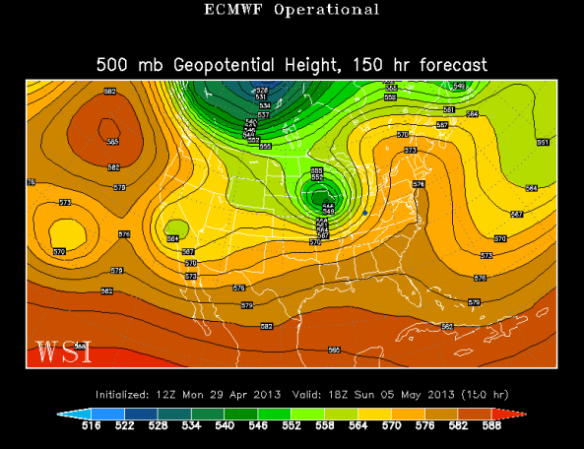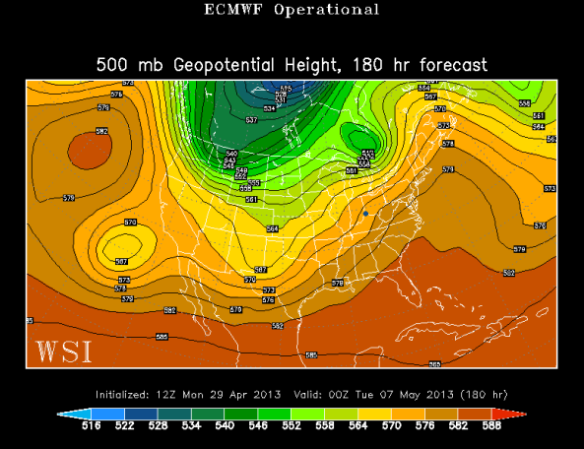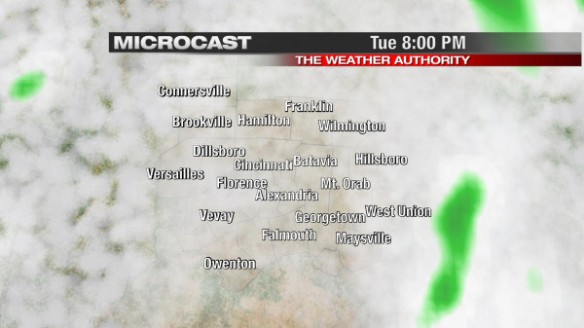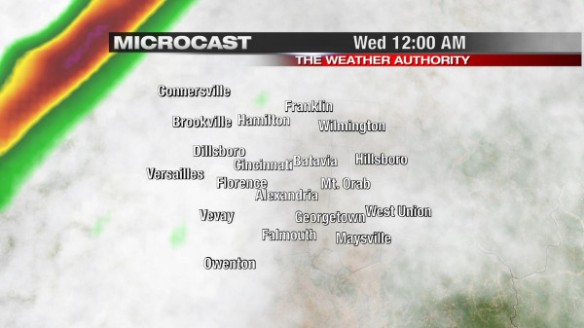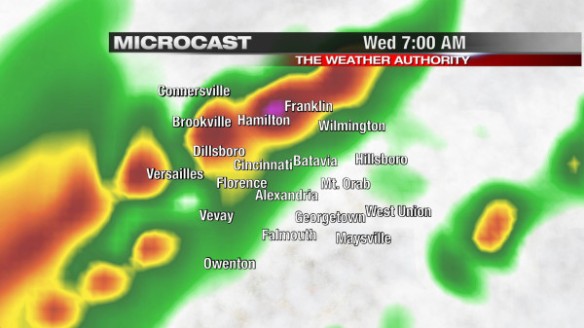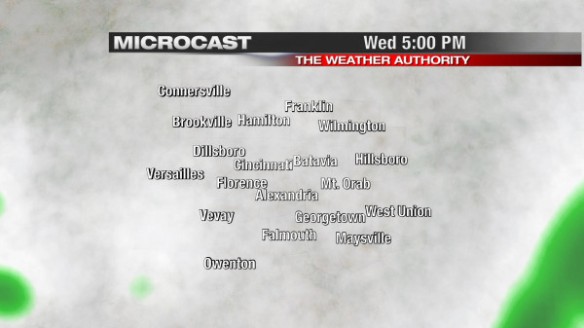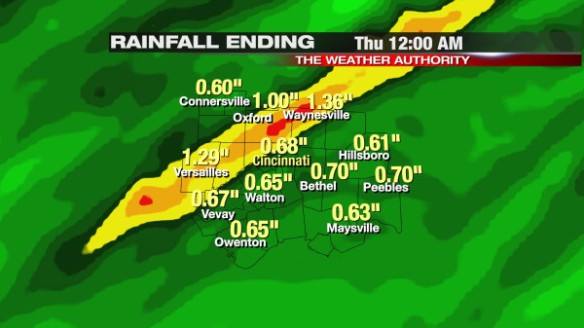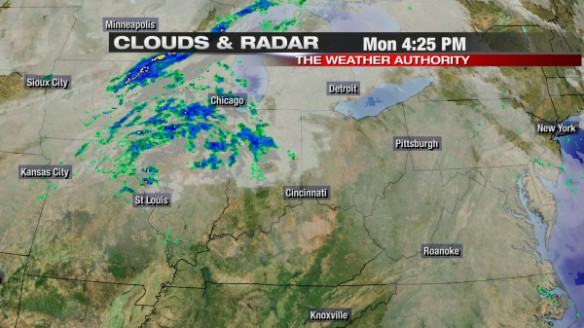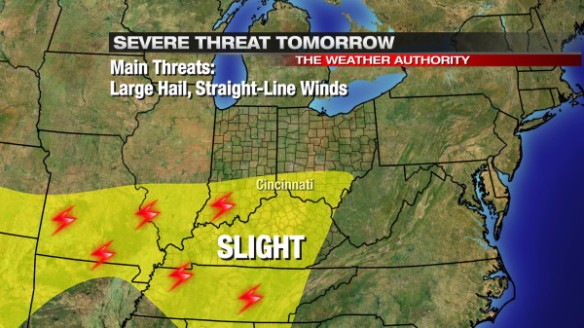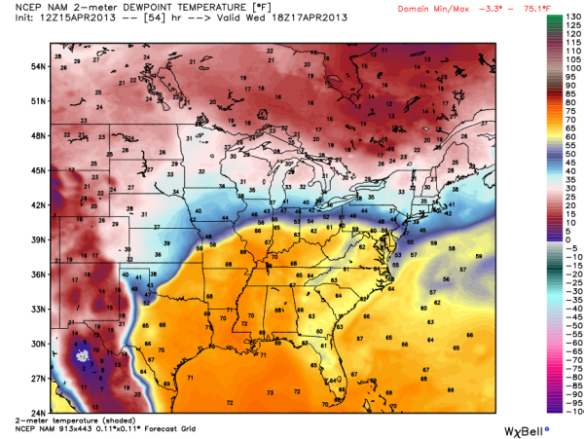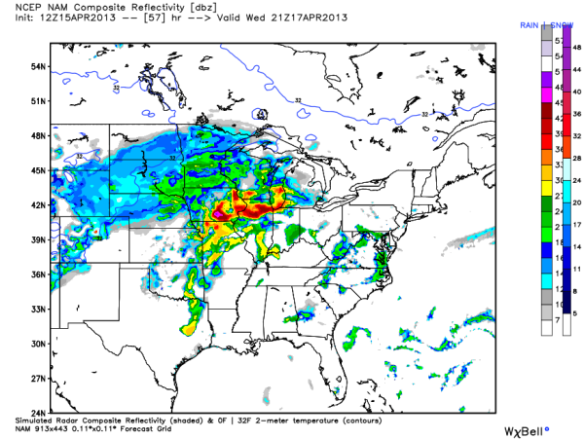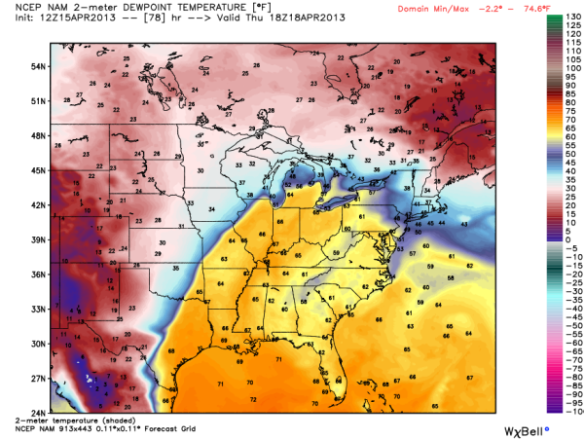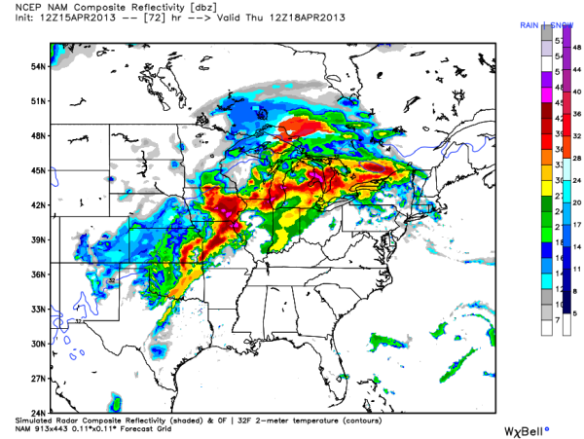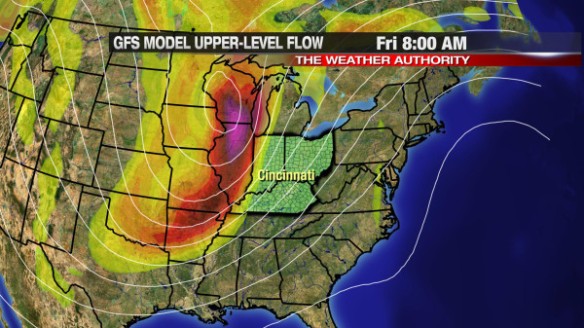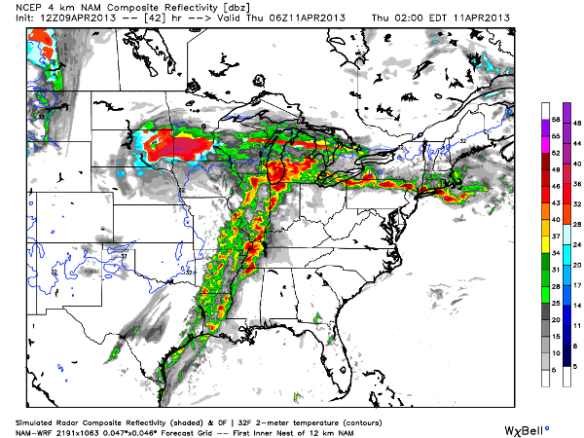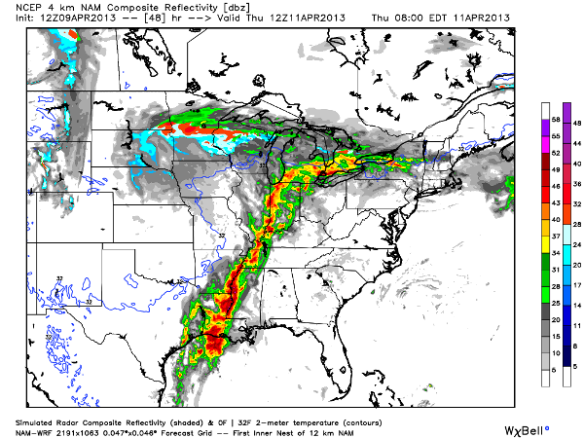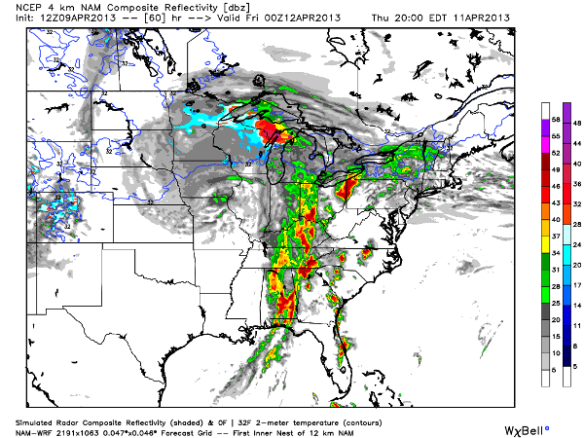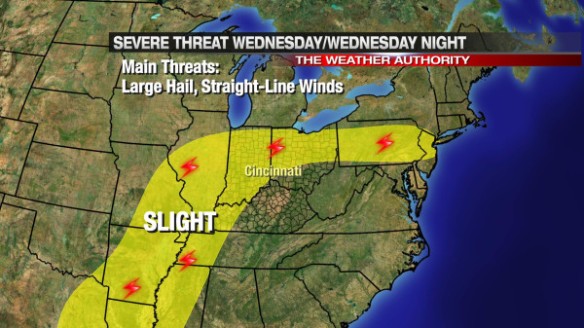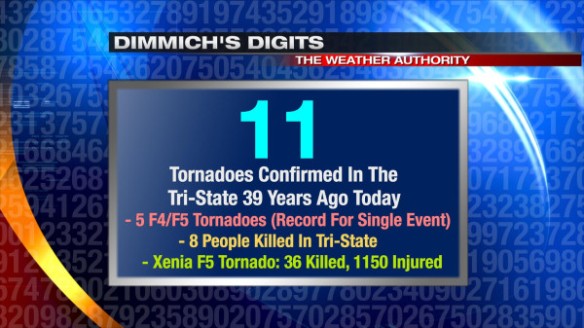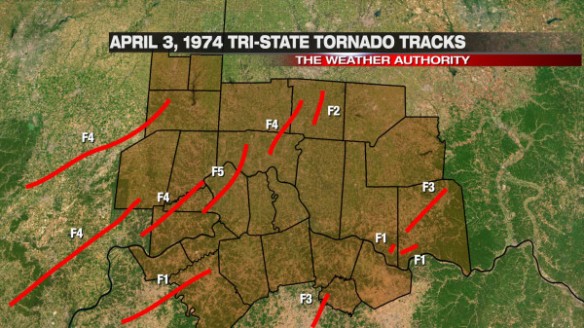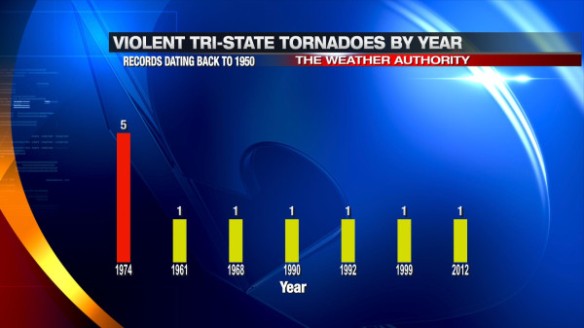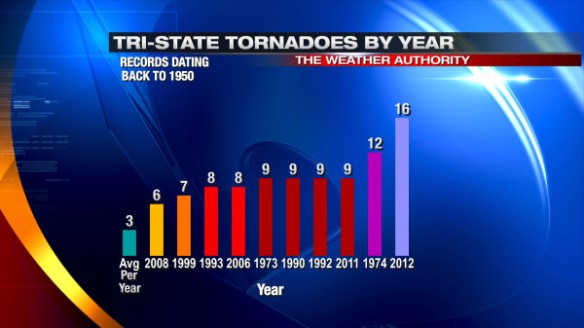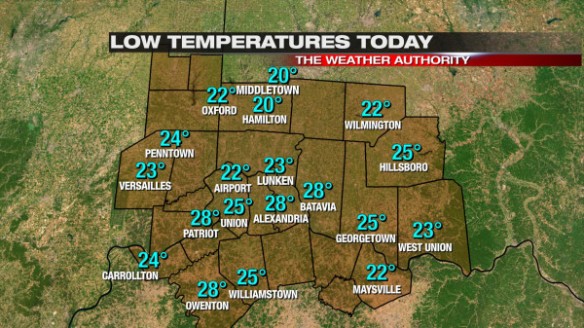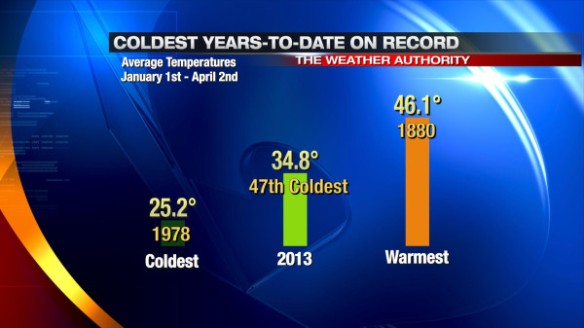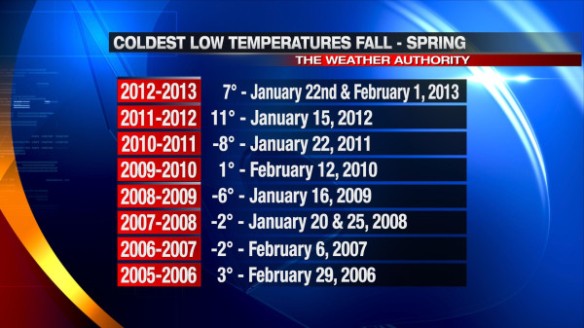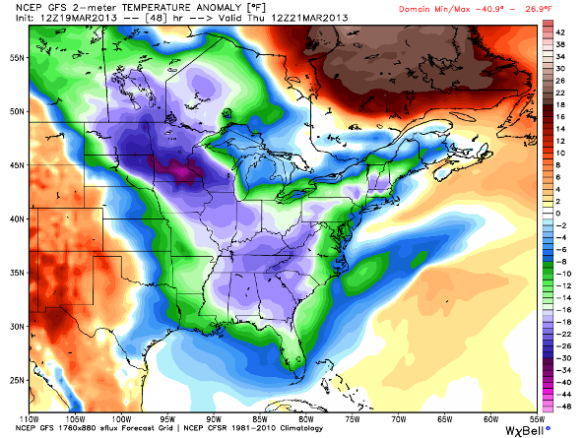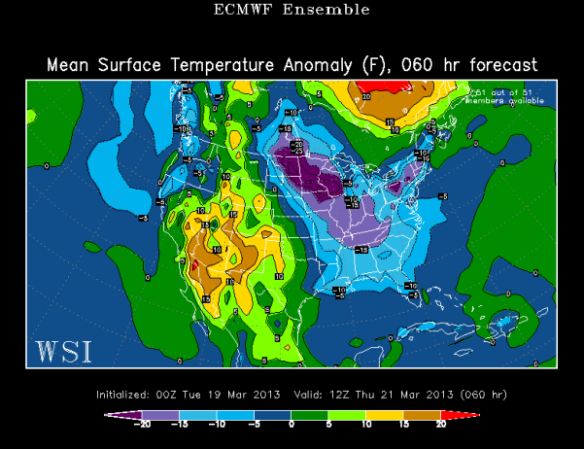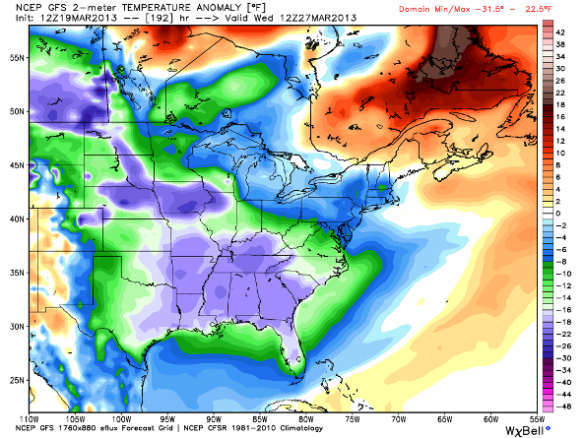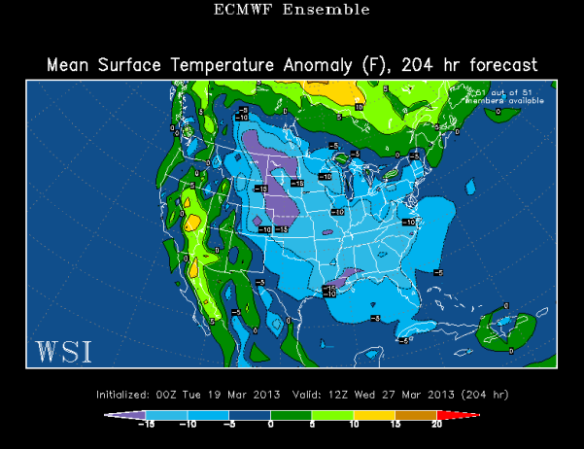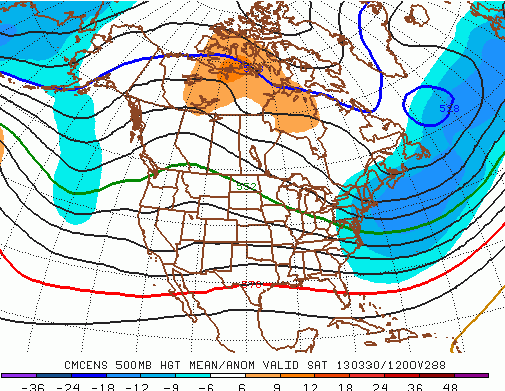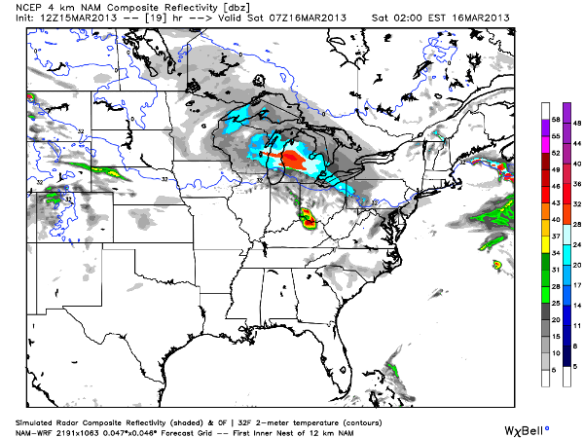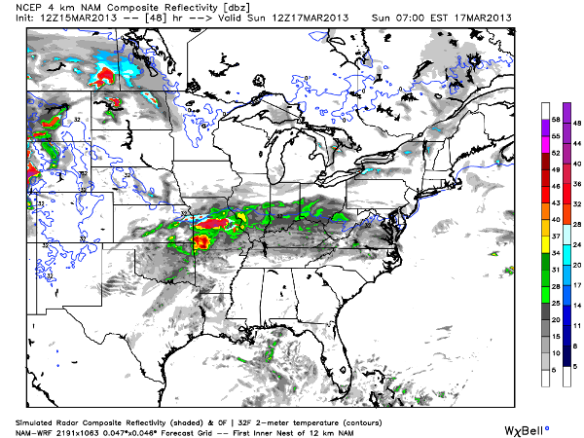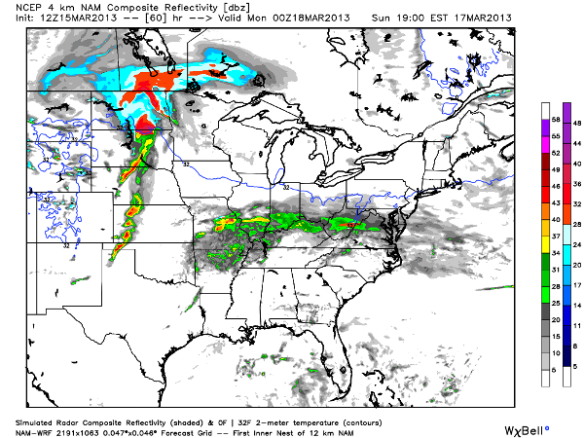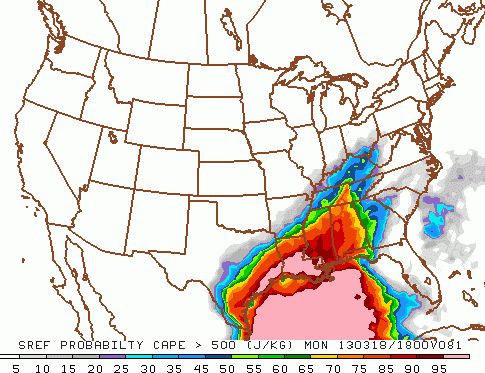Many saw frost in the Tri-State this morning thanks to a clear sky overhead, a calm wind, and a dry air mass in place. The warmest Tri-State locations only dropped into the lower 40s, but most hit the mid and upper 30s to begin Mother’s Day 2013:
Today’s official early morning low temperature of 37° at the Cincinnati/Northern Kentucky International Airport makes Mother’s Day 2013 the 6th coldest start to Mother’s Day on record (the first Mother’s Day was in 1908):
Tonight looks to be colder than this morning with slightly drier air over the Tri-State and winds lighter for a longer period of time.
How unusual is it to see a frost or freeze in May? It’s unusual, but it happens every couple of years. Since 1871, Cincinnati has dropped to or below 32° 24 times, 34° 53 times, 36° 108 times, and 38° 185 times during the month of May (out of a total of 4,242 possible days). The latest spring hard freeze (28° or colder) on record in Cincinnati was in early May, but areas of frost have showed up in Cincinnati as late as May 31st:
Frost can occur at different temperatures; usually, a temperature of 36° or lower with a light wind means frost is a concern.
Nearly all of the temperatures we show you on television are measured about 6 feet above the ground. Because cold air is more dense than warm air (and therefore sinks), the temperature at the ground is often 2-4° colder than 6 feet above the ground. This is big reason why we are encouraging everyone to cover their plants or bring them inside overnight!
It is unusual to drop into the 20s in Cincinnati during the month of May. Since 1871, there have only been 2 hard freezes in Cincinnati between May 1st and May 31st. Here are some additional facts about near freezing temperatures in May:
The weather pattern from early May 2011 is very similar to the pattern we are in now. Note this morning’s low matches the morning low from May 4th, 2011 and tonight’s forecast low temperature matches the low temperature on May 5th, 2011.
I strongly recommend you bring in your plants tonight!

